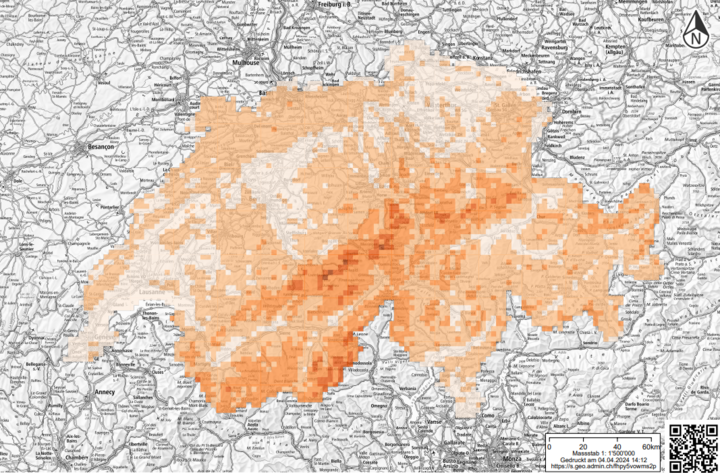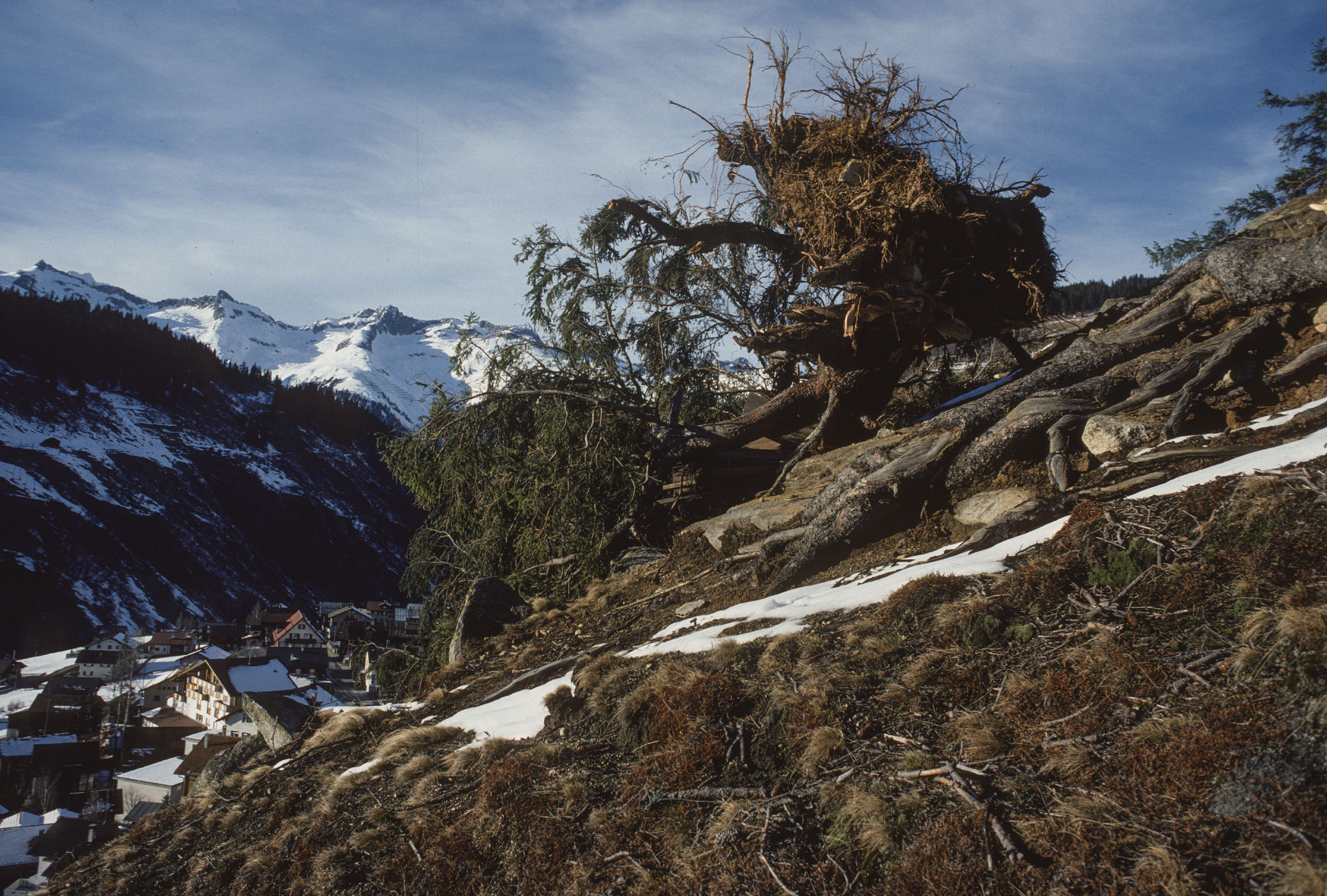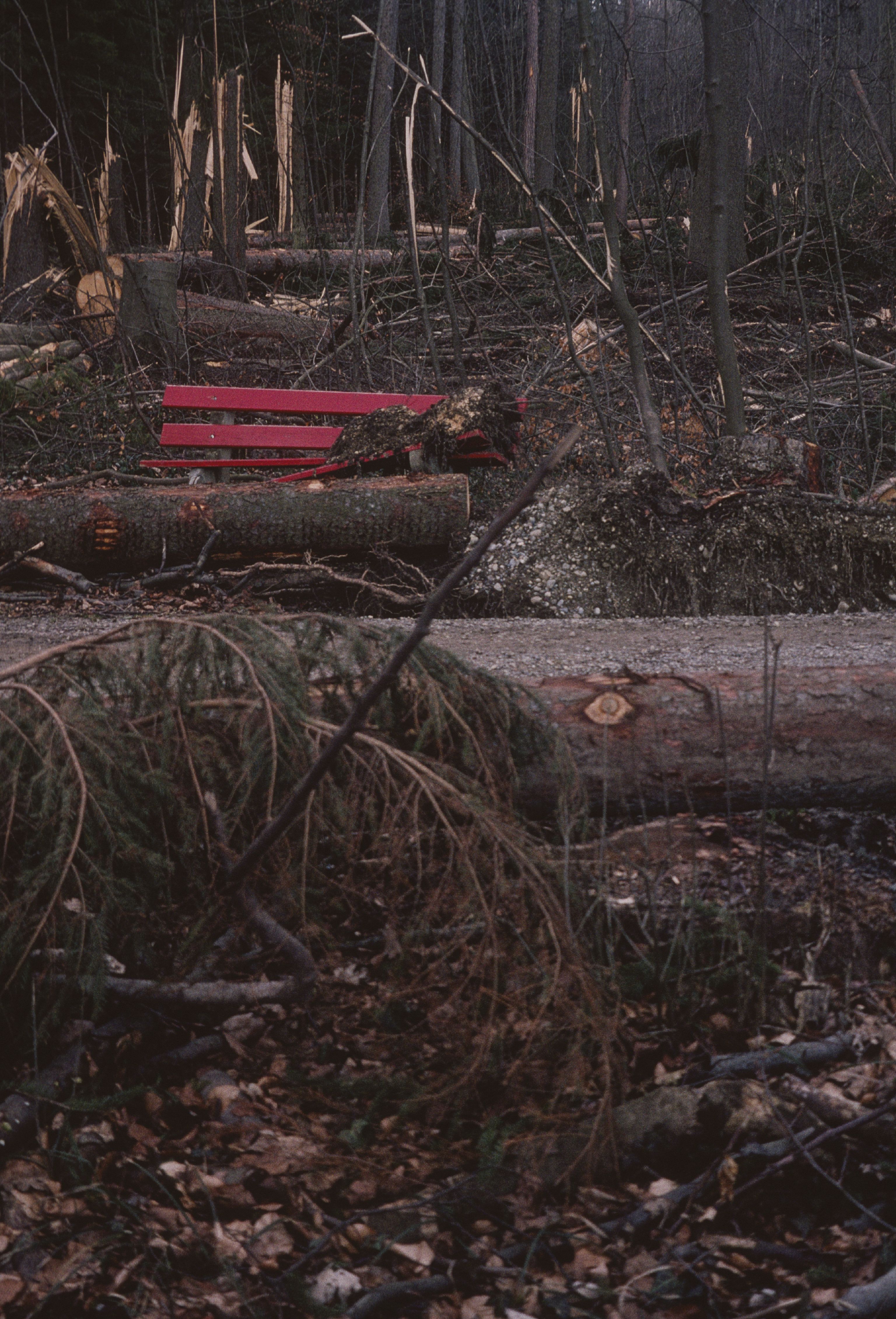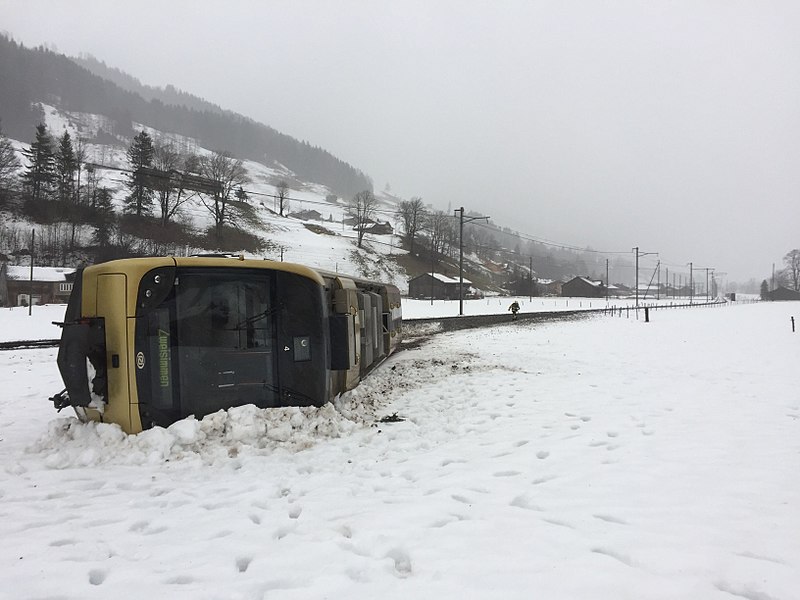Storms - together with floods and hail - are the natural hazards that repeatedly cause the most property damage in Switzerland each year. Winds with a force of over 75 km/h (or wind force 9) are referred to as storms.
Strong winds cause damage, especially to buildings, infrastructure, vehicles and forests. Storms can cover roofs, tear off parts of facades, uproot trees and whirl around loose objects. Flying debris and falling objects endanger people.
Winter storms in particular, with storm fronts several hundred kilometres long, cause the most damage. Other storm types such as bise, foehn, thunderstorm gusts, tornadoes or downbursts (localised downbursts) are smaller in scale but can also cause massive damage locally.
Effects of climate change
Unclear effects of climate change

Both in Europe and in Switzerland, a trend towards a decrease in winter storms has been observed since the 1990s. However, this observation period is too short to draw any firm conclusions. There is also no reliable information on foehn storms and tornadoes.
Effective measures
Effective measures
In Switzerland, buildings are generally built to be robust, so that walls only crack in extreme cases. Owners can minimise most medium and minor damage with careful planning and regular maintenance. The federal government also issues behavioural recommendations in the event of storms. Examples of measures include








